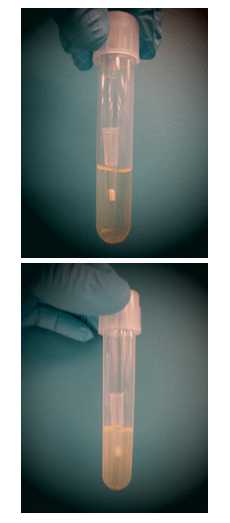Inoculating a Liquid Bacterial Culture
Addgene The Nonprofit Plasmid Repository, Joe A Kaczmarski
Abstract
This protocol is for inoculating a liquid bacterial culture. To see the full abstract and additional resources, visit https://www.addgene.org/protocols/inoculate-bacterial-culture/.
Steps
If you haven't already, prepare autoclaved liquid LB. For example, to make 400mL of LB, weigh out the following into a 500mL glass bottle:* 4g NaCl
4gTryptone2gYeast Extract- add dH2O to
400mLNoteNote, if your lab has pre-mixed LB agar powder, use the suggested amount, instead of the other dry ingredients above.
Loosely close the cap on the bottle (do NOT close all the way or the bottle may explode!) and then loosely cover the entire top of the bottle with aluminium foil. Autoclave (media setting) and allow to cool to room temperature. Now screw on the top of the bottle and store the LB at Room temperature.
When ready to grow your culture, add liquid LB to a sterile tube or flask and add the appropriate antibiotic to the correct concentration (see table below in step 9).
Using a sterile pipette tip or toothpick, select a single colony from your LB agar plate.
Drop the tip or toothpick into the liquid LB + antibiotic and swirl your tube or flask.
Loosely cover the culture with sterile aluminium foil or a cap that is not airtight.
Incubate bacterial culture at 37°C for 12h 0m 0s-18h 0m 0s in a shaking incubator (ideally on ~25° angle) at ~ 250 rpm.
After incubation, check for growth, which is characterized by a cloudy haze in the media (see image below).
(Optional) For long term storage of the bacteria, you can proceed with Creating a Glycerol Stock.
You can now isolate your plasmid DNA from the bacterial culture by isolating your plasmid DNA.


